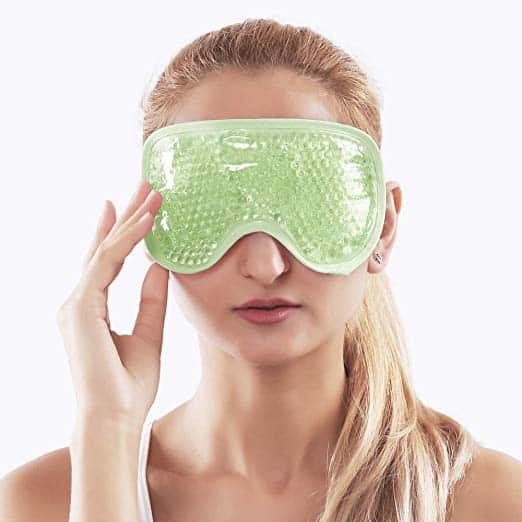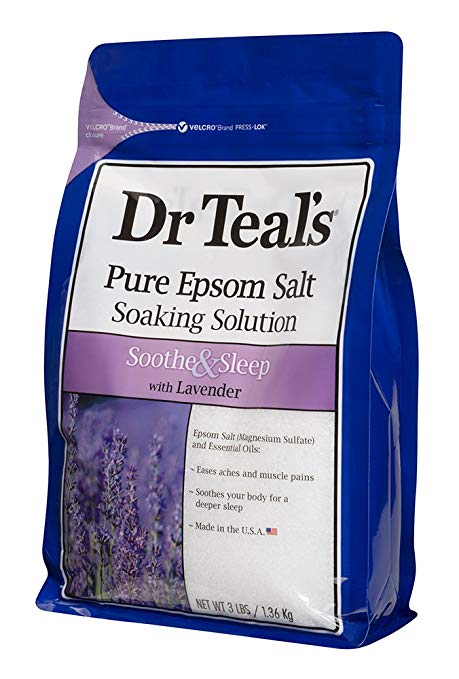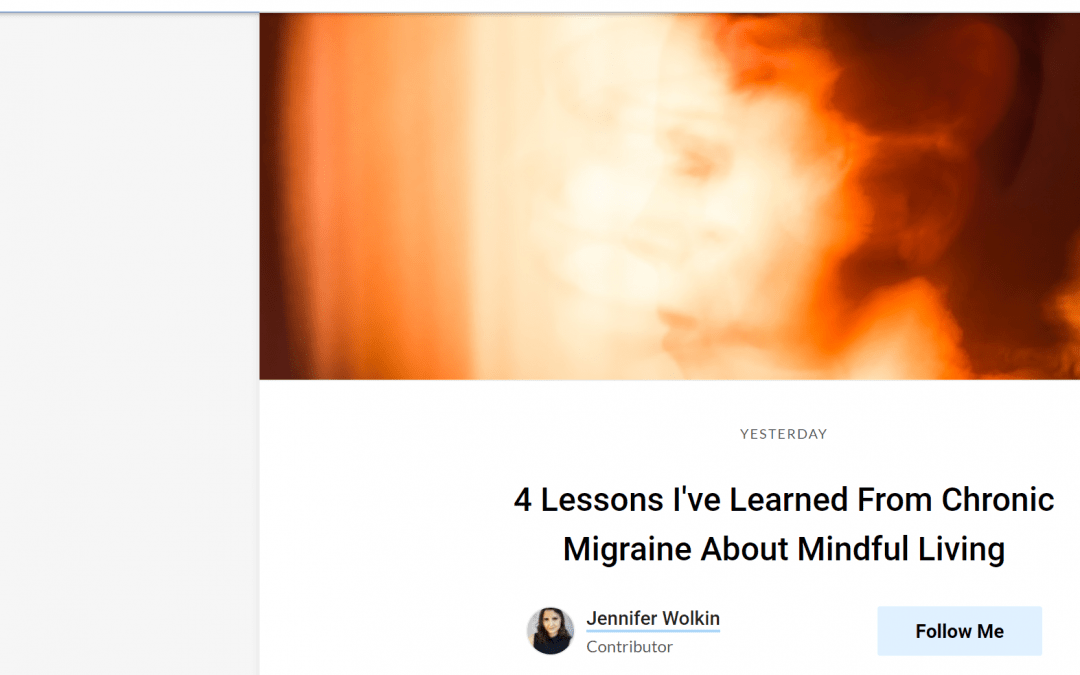This post originally appeared on The Mighty. The blog below has been updated since the original post.
I’ve had episodic migraines all my life. My doctor categorized them as “menstrual migraines” because a day or two before menstruation a bad headache would strike, sometimes with nausea, and mostly on one side of my head.
I’d take four Advil, put an ice pack on my neck, and be fine a few hours later. It seemed like a given, and I just went with it. Looking back, I found them routine, rather than debilitating.
That all changed a few years ago; here’s how I remember it:
In June 2017 I took a flight from New York City to the West Coast, and then two more flights within the same week. I experienced 110° F Las Vegas summer weather, jet lag, and overall exhaustion. I was still feeling stressed from the news the month prior that I might be experiencing perimenopausal hormonal changes (read: premature ovarian insufficiency). Then, on the fourth day of the trip, after sleeping for 16 hours straight, I woke up feeling an off-ness that grew into a slew of neurological symptoms that never went away.
This perfect storm of events, as my neurologist called it, must have set off a cascade inside my body that culminated in a migraine that has lasted for the past two years in varying degrees of intensity. I have had various in and out symptoms including light sensitivity, dizziness, nausea, blurriness, stabbing eye pain, gastric stasis, brain fog, and headaches.
Some might call it status migrainosus, which by definition is a migraine that lasts for more than 72 hours. Whatever we call it, my migraines clearly went from being episodic to a chronic and debilitating issue. The initial migraine technically broke two months later following a steroid taper, which gave me two days of relief. Since then, I have had on and off symptoms almost daily in varying degrees and intensities.
Despite the pain and discomfort, this time has been ripe with lessons in more mindful living. Going through this experience has been a game-changer in the level of care I provide to my own clients who experience migraine. I can relate on a level that immediately sets me a part from other health psychologists.
Here are some of the things that I’ve learned:
1. Awareness
Knowing and eliminating my triggers:
While migraine is often genetic, and there is no one agreed upon cause, there are triggers involved – which don’t cause an attack, but can set one off. Some are uncontrollable, like barometric pressure, and some can be managed through lifestyle changes. The latter requires meticulous self-calibration.
I’ve eliminated many dietary triggers, including alcohol, chocolate, anything with tyramine, anything with nitrates, and even some food high in histamines. The calibration continues, as even the amount of caffeine that I put in my body can put me at risk for symptoms. So, every morning I have just the right amount of espresso, no more, no less. This also applies to sleep. I need enough sleep to feel well, but too much sleep can actually tip the scales in the wrong direction. This awareness to detail has been a bit painstaking, and it sometimes feels like a roulette game. Yet, I’ve never been so aware of what my body needs in any given moment.
Recognizing the subtle signs of a migraine before they escalate:
My interoceptive awareness has been heightened in a beneficial way. Some of the medications to abort migraine work best when you can catch the symptoms early. This has required me to be consciously aware of the subtle nuances in the way I feel at any given moment. Of course, at its extreme, this can become almost obsessive. But when it’s for the sake of one’s wellness, it feels calming to be able to know that I can help myself by being more attuned to my body.
For me, my heart starts to race, my vision tends to blur, and my shoulders and neck start to tighten. I’ve learned that by noticing these symptoms early, I can sometimes even skip the medication by immediately applying peppermint oil to my wrists and temples, ice on my forehead, and heat on my neck area.
2. Self-Compassion
Less “shoulding” all over myself:
I have a tendency to “should” all over myself to the tune of, “I should be writing my book right now, I should be creating my e-courses, and I should expand my practice to include group therapy, etc.” At times, however, the symptoms were so disabling that I couldn’t do much but lay in a dark room. In those moments, I worked hard on letting go of my “shoulds, ” such as, “How can I be laying here when I should be accomplishing this and that and the other thing?!”
Compassion for my body:
Chronic migraine forced me to take a break from physical exertion. With the lack of consistent cardio, coupled with the weight-gain side effects of certain medications, I saw the number on the scale go up. At first, I started to obsess over the weight that I “should” be at. Then, I started to have compassion for the strength of my body as it went through this process. Instead of focusing on pounds, I focused on wellness.
I am finally challenging many of the “shoulds” I’ve amassed, and as I do I notice the seeds of self-compassion budding within me.
3. Gratitude
Gratitude for moments of relief:
I’m certainly not going to imply that we have to struggle in some capacity to feel and express gratitude! Yet, the caliber of gratitude that I felt in the moments when I experienced even modicums of relief from my migraine symptoms, was something I’d never experienced in all my years of gratitude training. I found myself literally saying, “Thank you, thank you, thank you!” But when the pain returned, and I was at risk for falling into a darkness, “Why was that relief taken away from me!?” I challenged that thought, and reminded myself that if I had a moment of relief, I would have another – and that gave me hope.
Gratitude for the care I have been, and continue to be, shown:
I tend to be more of a nurturer, caregiver type — much better at giving than receiving — but because of the sometimes disabling nature of migraine, I literally had no choice but to allow myself to surrender to others’ giving.
Whether it was foot massages in the throes of a more severe attack, ice and heat around the clock as needed, mailing me different essential oils, including peppermint — which I’ve found has been crucial — showing up to the ER when the relentless pain called for a visit, calling or checking in daily, helping me strategize to find the best and highest caliber treatment team, and even just holding me during some of the more emotional moments when I’d cry from exhaustion, when the hope was too hard to hold, when I couldn’t see my future.
To see those I love show up in many different ways to bring me even just a little more relief filled me with gratitude — again, the kind I had never quite felt before.
4. Patience
Patience in finding the right treatment:
By nature, I tend towards the more impatient end of the spectrum. I like to take productive action and see immediate results — cause and effect, right? Well, sometimes, life just doesn’t work like this and I have had to maintain patience across many facets of my migraine experience.
Finding the right treatment team takes time. Not every doctor is going to be the right fit for your needs, and that’s OK. However, it can feel like a job finding the point person who will facilitate the appropriate treatment, the clinician who is the right fit. After a few months, thanks to a friend’s recommendation, I’ve finally found someone.
Often, treating migraine also calls for finding the right cocktail of medications. This takes a lot of time, too. Not only do you need to find the right combination that works for each unique individual, but it also takes at least one month before you’ve given each and every medication its “fair shot.” Plus, some come with egregious side effects, and you have to decide: do you wait it out and hope they subside as the medication takes effect – or do you stop it, and start over?
I’d like the healing to be more linear and more blatant, but it’s not. There’s a lot of waiting involved, and the waiting feels compounded because it happens sometimes in the context of great discomfort and pain. Baby steps is my new mantra, but none of this feels easy.
So, while it’s taken a solid treatment team, preventative meds, significant lifestyle and dietary changes, and incredible support, I have no doubt that these lessons are part of my healing process.
That’s the irony of all ironies. The lessons learned are like lifeboats in an unpredictable, roaring sea. Again, one doesn’t have to struggle to “see the light,” but if one is experiencing discomfort and pain, there’s more to see in that muck than meets the eye.
















